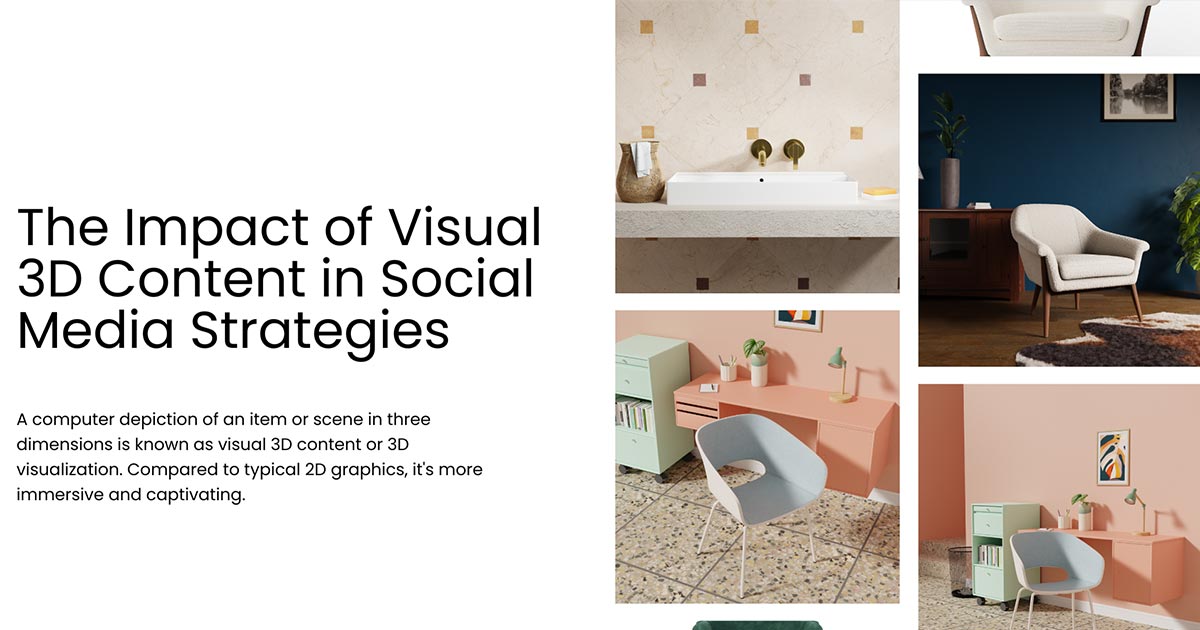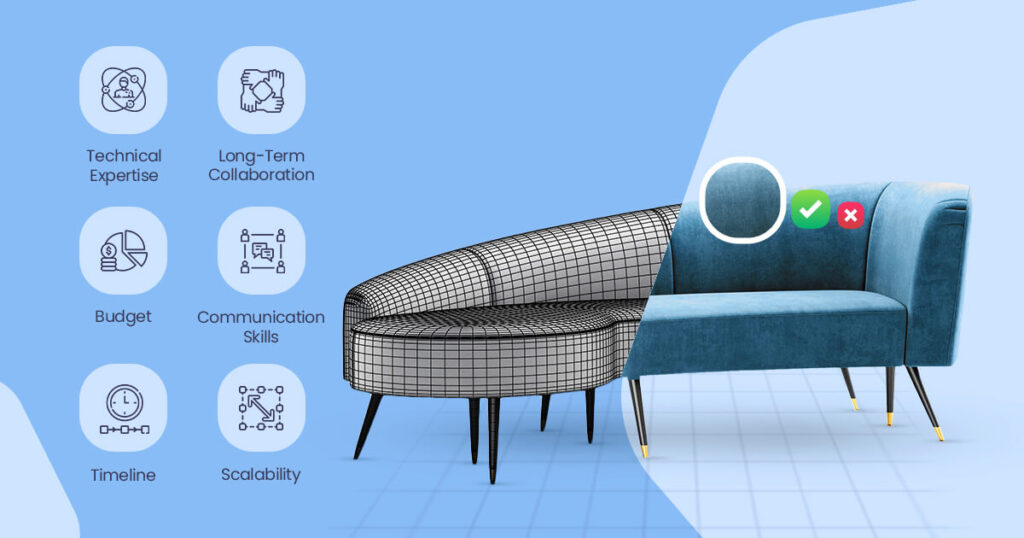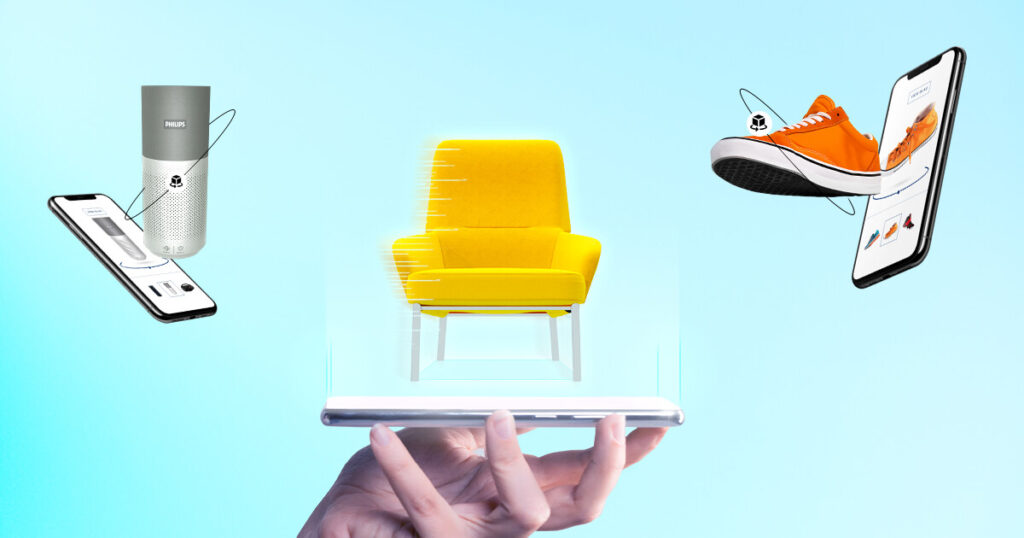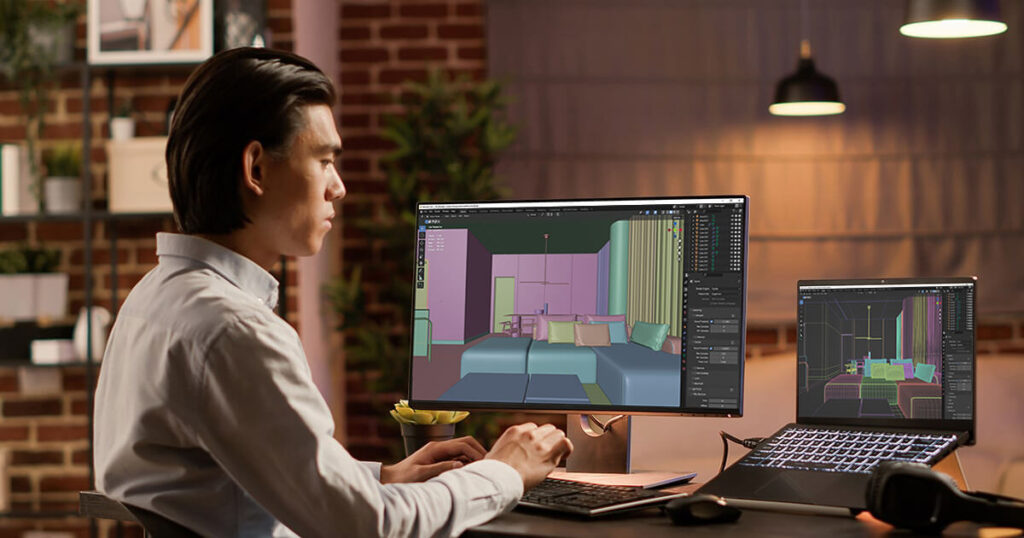A computer depiction of an item or scene in three dimensions is known as visual 3D content, or 3D visualization. Compared to typical 2D graphics, it’s a more immersive and captivating experience since it’s a strong tool that lets viewers engage with and study a product or concept from many angles.
Because of the speed at which the digital world is evolving these days, effective social media marketing today demands visual 3D content. Sharing and consuming visually appealing content is now easier than ever before, mostly because of the efforts of platforms like Instagram, Pinterest, and TikTok, which have taken advantage of our natural aesthetic sense. Studies show that posts with images or videos have a higher chance of drawing in visitors, generating leads, and boosting sales.
With regard to social media techniques, this blog article seeks to explore the deep influence of visual 3D material. We’ll examine how better brand storytelling, more consumer interaction, and increased conversion rates can all be achieved with 3D visualization. Businesses may use 3D content as a potent weapon to differentiate themselves in a competitive digital market by learning about its benefits.
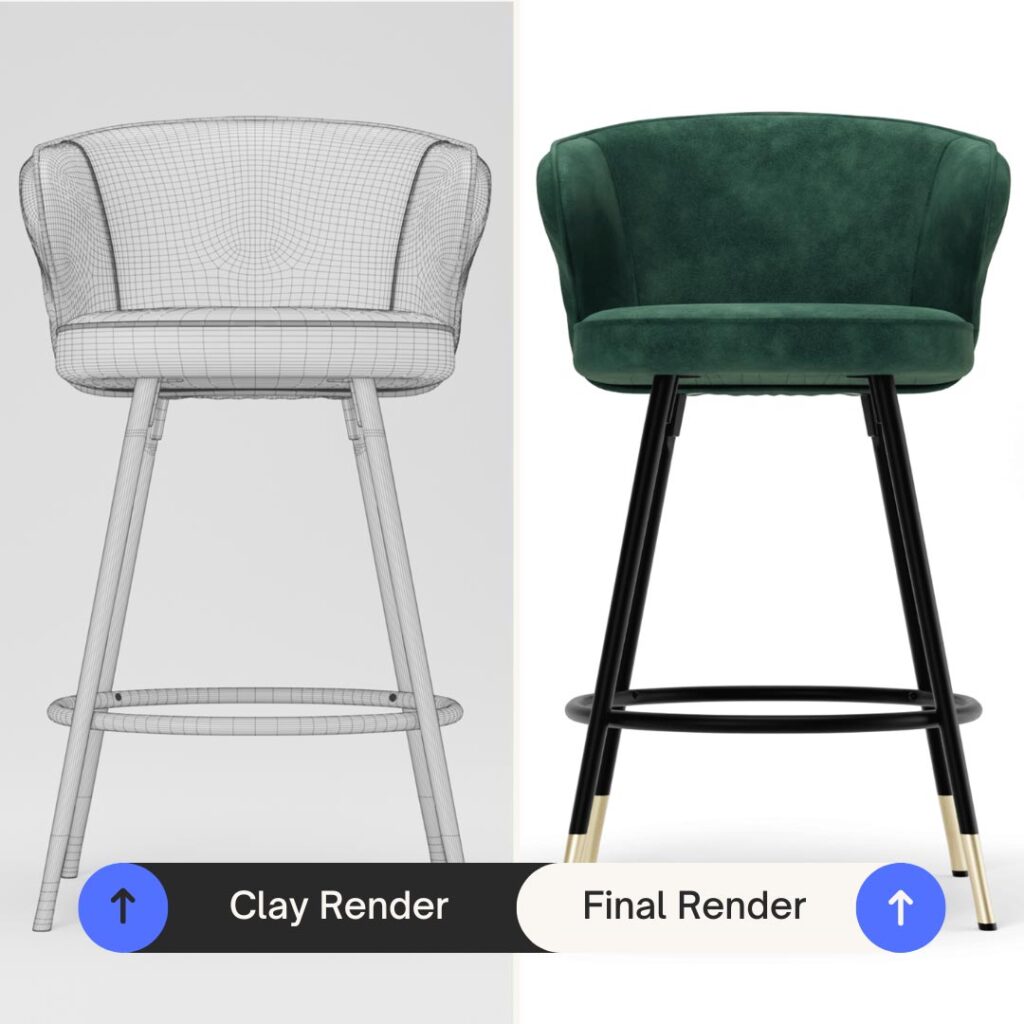
The Rise of Visual 3D Content
Historical Context of Visual Content in Social Media
From the earliest days of sites like Flickr and YouTube, visual material on social media has evolved. These sites laid the foundation for the visually-focused social media environment we are familiar with by introducing users to the idea of sharing images and videos online. The need for aesthetically attractive material expanded rapidly as mobile devices and internet speeds improved.
Technological Advancements Enabling 3D Content Creation
Some notable technological advances are responsible for the widespread use of 3D content. Designers and artists may now more easily produce realistic and eye-catching 3D models thanks to powerful rendering technologies like Blender and Cinema 4D. Moreover, new avenues for immersive three-dimensional experiences have been made possible by the broad adoption of augmented reality (AR) and virtual reality (VR).
Examples of Platforms That Support Visual 3D Content
A number of social networking sites have adopted three-dimensional material and are offering features and tools to let users share and engage with three-dimensional models. Among the well-known instances are:
- Instagram: Although it is most recognized for its 2D photos and videos, Instagram has dabbled with using 3D aspects in its AR filters and effects.
- Facebook: Facebook has experimented with producing 3D content using technologies such as 3D photo ops and the ability to create and share 3D models.
- Pinterest: With a strong emphasis on visual inspiration, users are sharing an increasing amount of 3D models and designs on this network.
- TikTok: Popular for its short videos, TikTok allows users to create 3D overlays and animations with its integrated augmented reality effects.
These and a plethora of other platforms are constantly evolving to support and advertise 3D content, hence improving user accessibility and engagement.
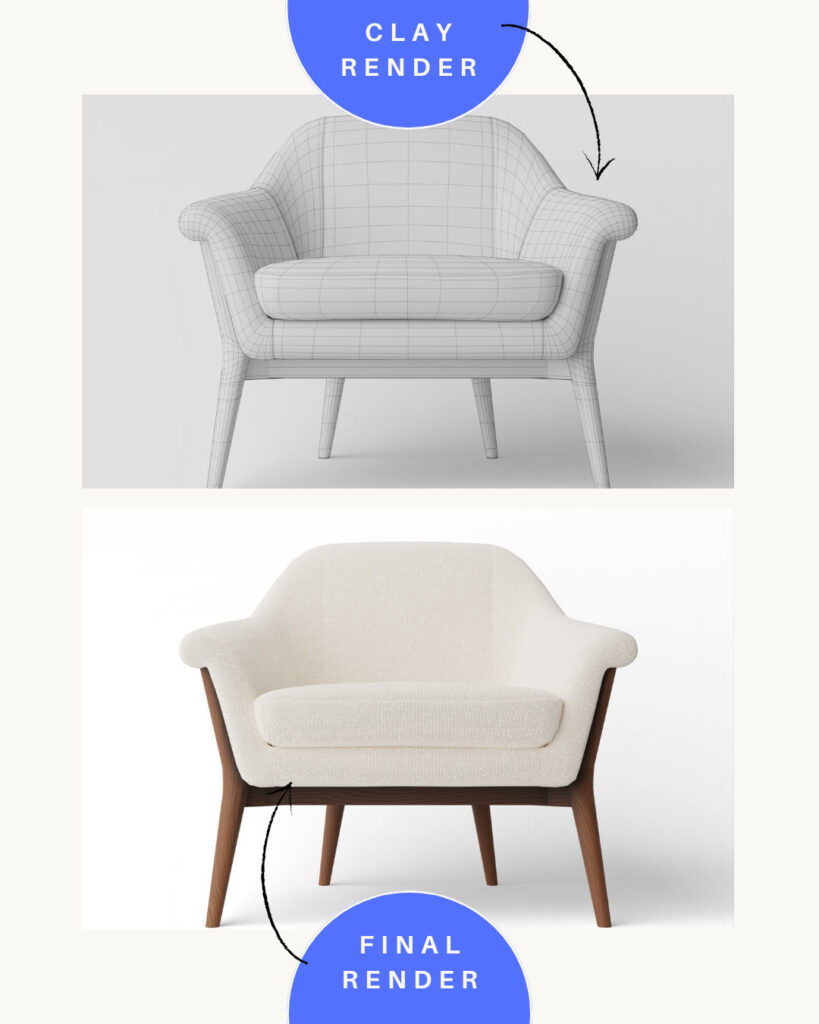
Incorporating Visual 3D Content in Social Media Strategies
Enhanced User Engagement and Interaction
When compared to graded 2D photos or movies, visual 3D details provide a more charming and progressive experience. Users can be drawn in, piqued in their interest, and given the scope to connect more deeply when items or ideas are visualized in three dimensions. Better change may result from these improved engagement metrics, which can also raise dwell periods and click-through rates.
Improved Brand Storytelling and Messaging
A strong narrative tool is offered by 3D visualization. Businesses may bring their ideas or goods to life in a way that appeals to their target market by producing aesthetically appealing and educational 3D models. Conveying complicated concepts in an engaging way and fortifying brand identification are all possible benefits of this.
Increased Share ability and Reach of Content
Visually stunning and captivating content is more likely to be shared on social media. Content that is distinctive, memorable, and worthy of sharing may be produced with 3D visualization. Users that share your 3D material can reach a larger audience and establish powerful connections with you.
Best Practices for Implementing Visual 3D Content
Identifying the Right Platforms for 3D Content
Not all social media platforms are designed to function properly with 3D content. The following factors should be considered when choosing where to submit your 3D photos:
- Platform audience: Is the intended audience for the platform compatible with your brand and the kind of 3D content you produce?
- Platform features: Does the platform have any tools or capabilities, such 3D models or AR filters that support 3D content?
- Engagement metrics: Examine the interaction rates of 3D content across various platforms to ascertain which ones work best for your company.
Tips for Creating High-Quality 3D Visuals
Use these recommended practices to produce 3D images that are effective:
- Clear objectives: Establish the objectives for your 3D material and make sure the images support your statement.
- Simplicity: Steer clear of really complicated 3D models that might be challenging to load or comprehend.
- Visual appeal: For visually striking images, use premium textures, lighting, and materials.
- Interactivity: To increase user engagement, provide interactive features like animations and clickable buttons.
Measuring the Effectiveness of 3D Content in Social Media Campaigns
Keep an eye on important metrics like these to gauge the effectiveness of your 3D content:
- Engagement: Measure likes, comments, shares, and saves to gauge user interest.
- Click-through rates: Track the number of clicks on links or calls to action within your 3D content.
- Conversions: Monitor the impact of 3D content on sales, leads, or other desired outcomes.
- Time spent on page: Measure how long users spend viewing your 3D content.
You may optimize your future 3D content strategy by keeping an eye on these indicators, identifying what’s performing well and making data-driven decisions.
Conclusion
Visual 3D content is becoming an effective way to improve social media marketing. It gives customers a more engaging and immersive experience by letting them engage with products or concepts from many angles. Businesses may use 3D visualization to enhance brand narrative, buyer inclinations, and information sharing capabilities.
It’s critical to select the right platforms, raise excellent images, and track campaign results in command to fuse 3D content into community media scheme. Social media sites like Facebook, Pinterest, and Instagram have welcomed 3D content and are offering instrument to help in its usage. The best ways to make 3D images are to have specific goals, keep things simple, make sure they look excellent, and include interactive components.
To gauge the success of their 3D content, businesses may track key performance indicators (KPIs) such as desire, click-through price, conversions, and time spent on folio. We may hope to see even more cutting-edge visual material on social media, like augmented reality and virtual reality experiences, as technology develops. Businesses must accept the use of these new visual technologies if they want to stay competitive and successfully engage their audience.
FAQ
How do you make a visual 3d model?
Using these tools, you may make a visual 3D model:
- Choose software: Blender (free and open-source), Autodesk Maya (professional), and SketchUp (user-friendly) are popular possibilities.
- Start modeling: Start with fundamental forms such as cubes, spheres, and cylinders.
- Refine the model: Sculpt, extrude, and change the form with the tools provided.
- Add details: Enhance realism by using textures, materials, and lighting.
- Animate (optional): Incorporate movement and interactivity onto the model if you’d like.
- Render: Produce the finished picture or movie from your 3D design.
Helpful resources:
- Tutorials: There are several websites that provide free lessons for various 3D programs.
- Communities: Participate in groups and forums to network with other modelers and obtain assistance.
What are the methods to make visual 3D models?
With the help of this useful technology, 3D modeling, we may realize our creative visions. We can build realistic and engrossing virtual worlds by fusing technological expertise with creative talent. Numerous sectors use 3D modeling for everything from product visualization to character creation. A little skill and the appropriate tools may enable anyone to make visually stunning 3D models.
How do I make a visual 3D structure?
- Choose software: Sketch Up, Maya, and Blender are popular choices.
- Start with basic shapes: Start by working with cubes, spheres, or cylinders.
- Combine and modify: Combining, extruding, and sculpting forms requires tools.
- Include details: Incorporate textures, lighting, and materials.
- Create structure: Put shapes together to create the structure you want.
- Refine and polish: A polished look may be achieved by adjusting details, lighting, and materials.

